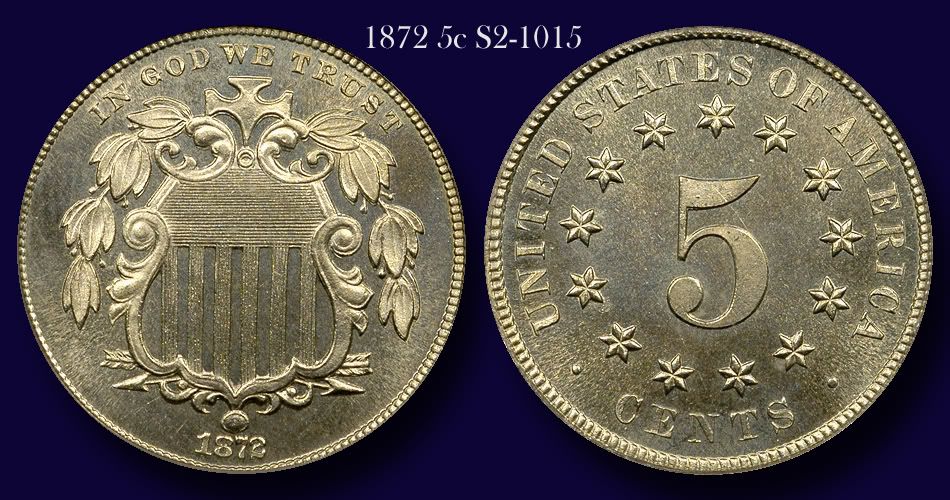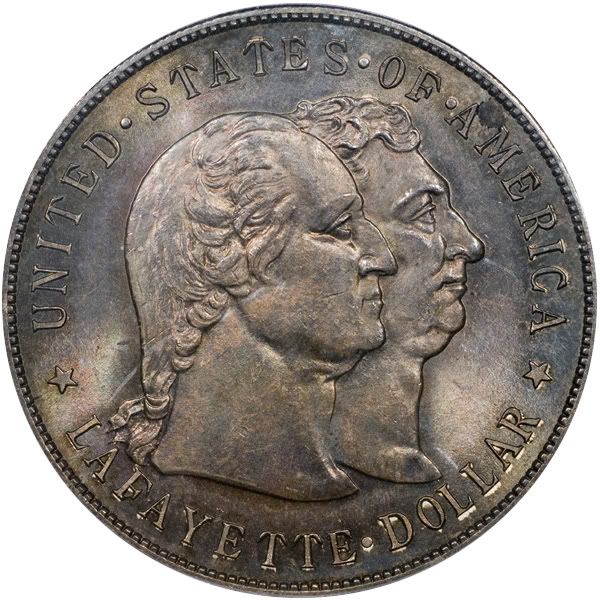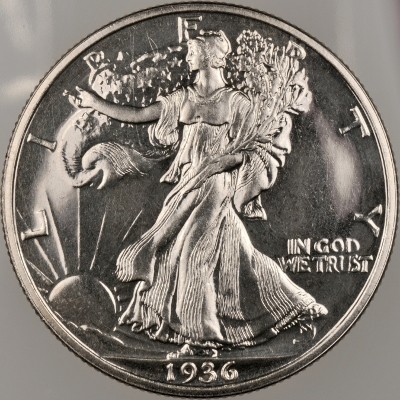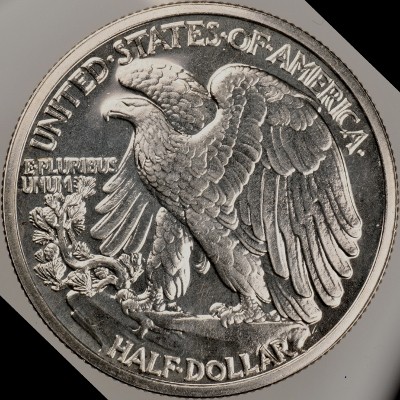-
When you click on links to various merchants on this site and make a purchase, this can result in this site earning a commission. Affiliate programs and affiliations include, but are not limited to, the eBay Partner Network.
-
Posts
16,033 -
Joined
-
Last visited
-
Days Won
2
Content Type
Profiles
Forums
NGC Journals
Gallery
Events
Store
Downloads
Posts posted by James_OldeTowne
-
-
It is a replica.
-
Welcome to our friendly little neighborhood!
We need photos, but I suspect they will merely confirm that the "coin" is fake.
-
Lance ("oldcollectorcoins") was patient with my delayed payment, and shipped well packaged coins extremely quickly. Thanks, Lance!
-
I recently concluded yet another great transaction with michael!
-
I own such pieces, and they cost $5 to $25. Some museum quality electros of famous coins can easily sell for thousands of dollars, but cheap copies of coins can cost only $1.
For that matter, I offer you $25 for this plus your cast Fugio, if you are interested.
-
I opened this thread tonight and suddenly realized that I made the OP four years ago (well, plus a couple months). My, how time flies. I always enjoy visiting to see what others have recently added to their collections, and and I learn a lot by viewing the coins (and comments) posted here. To mark the passage of time, I thought I'd repost pictures of the first coin in the thread followed by more recent -- though still pretty old now -- pictures of the same coin. The good news is that I still like it!


TTT
-
WOW, I just love coming back to this thread from time to time to see everyone's goodies. If only I had something new to post

 !!!!!!
!!!!!!Hopefully, finances will clear up for me by the end of the summer, then I look forward to a chance to put up SOMEthing.
Great thread and great coins everyone - my all-time favorite thread!
-
It's funny I would see the subject of the Bashlow restrikes come up. I was talking with a coin dealer today who told me he once bought fifty restrikes - for a buck apiece. I'd say he made out pretty well with them!
-
inadvertent double post
-
As I said before , the basis of all grading is born upon what is seen by the naked eye , and therefore , microscopic insignificants should not even be considered.
But if you really believe this to be true, then again, you validate my points above, and further invalidate the idea that any coin can be assigned a "perfect" grade, because what which we is perceive is subjective. It is physically impossible for all people to see any given coin (or any visible object) the same way, since we all have different eyesight. Therefore, no definition of "perfect" fits all scenarios, even though "perfect" implies something which is so exalted that it cannot be defective in any way under any circumstances.
Some folks are colorblind, some are near sighted, some far sighted, and some have astigmatism (sp?), yet all comprise the group of coin collectors. So what appears to grade MS-66 to a person with excellent vision may appear perfectly MS-70 to someone who cannot see the tiny flaws that his eagle-eyed companion can.
For all intents and purposes, every uncirculated coin might be "perfect" and grade MS-70 to a blind person who cannot detect flaws! So we cannot simply dismiss some physical aspects of a coin as "insignificant", since that decision in itself is subjective. What is insignificant to you may well be very significant to me, because we have different perspective.
-
If 70 equals perfection .....and a test score of 100 is perfection for that particular test....we should never award a grade of 100 for a test because a student can not possibly do anything that warrants perfection .
Your analogy doesn't work. When taking a typical test, the answer to the questions is either right or wrong. There is no "opinion" at work here. Either you answer 2+2 correctly, or you do not.
With coins, there are not absolutes. Grading is always always always subjective. A coin can grade either VG-8, VG-10 or VF-35 depending on who grades it. However, we all agree that "70" is supposed to represent perfection, but we cannot all agree on what perfection is, particularly since that which is being discussed is created by human hands. That is why the grade actually cannot be absolutely defined.
Human ingenuity created coins and a system used to grade them, but a much higher power decided what 2+2 equals.
-
Thanks for clarifying some good points!
-
I'll bet that the big majority of MS-63 Walkers, Washington quarters, Morgan dollars and Liberty nickels grade the same at both companies, just as some examples. I would bet that for a random sampling of 1000 such coins, 900 are interchangeably graded.
-
On average do NGC coins typically grade the same if regraded by PCGS?
By the way, since nobody seems to have directly addressed this question: Aside from the "70" factor, NGC coins typically do grade the same as PCGS coins, no matter what others may tell you.
-
Just because they have the ability to use an electron microscope to ensure perfection - should they?
I believe that use of an electron microscope would guarantee realization that perfection is a mere illusion, as is the "70" grade. However, it certainly is a useful marketing tool, of which PCGS takes full advantage (and NGC to a lesser extent).
-
I still think it's a shame. If that's how our current manufacturing technology is, so be it - just don't award the grade of 70, which used to stand for perfection.
The lack of imperfections, which are allowed under the standards for a grade of 70 at PCGS and NGC. Here is NGC's standard: "NGC defines a Mint State or Proof 70 coin as having no post-production imperfections at 5x magnification."
The standards for a grade of 70 don't require perfection. I think that's a shame.No such thing as a "perfect" coin IMHO.In the olden days 65 was the best that the TPGS offered.
Define perfection.
With our current manufacturing technology, there's no such thing as a 'lack of imperfections' in a coin. Pull out the scanning electron microscope and you will always find some. So in regards to coins, perhaps a lack of VISIBLE perfections is just fine as a definition and thus the 5x magnification makes a lot of sense and I don't think it's a shame at all.
Could not have been said better than that.
-
Can anyone shed some light on why PCGS pf70 coins sell at such a higher premium over NGC. I thought the two companies were basically equivalent.
On average do NGC coins typically grade the same if regraded by PCGS?
It's the same old story. A PCGS PF-70 sells for more simply because it costs more. The PCGS goal is not to grade those coin properly, but rather to manipulate the market in 70s. Therefore, you have to submit far more coins to finally get the 70, which of course leads to higher cost (more slabbing fees). Therefore, you MUST charge more at the retail level to recoup those costs.
The best bet is to save your money, and always buy the NGC 70 coin.
-
-
Maybe I misunderstand the order, but I thought only privately owned gold had to be surrendered. Maybe banks would not fall under this requirement?
-
A big purchase, but a coin I have wanted for a very long time. (PCGS MS65)


AWE-SOME !!!!!!!!!!!!!!!!!!! I'm sure that cost a mint, but it's well worth it!
-
-
-
-










Aren't the slabs airtight?
in US, World, and Ancient Coins
Posted
Slabs MUST NOT be mistaken for being airtight.